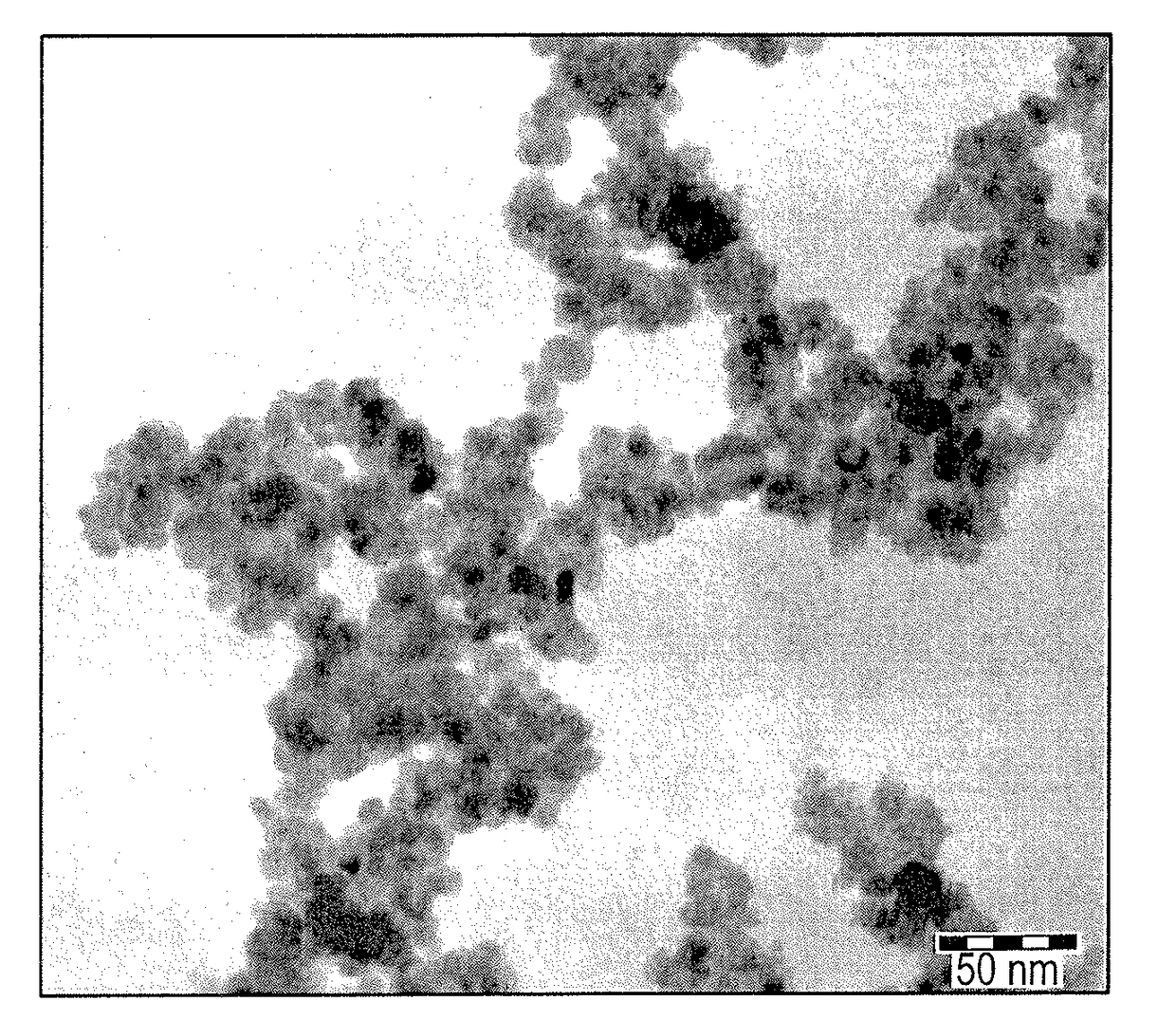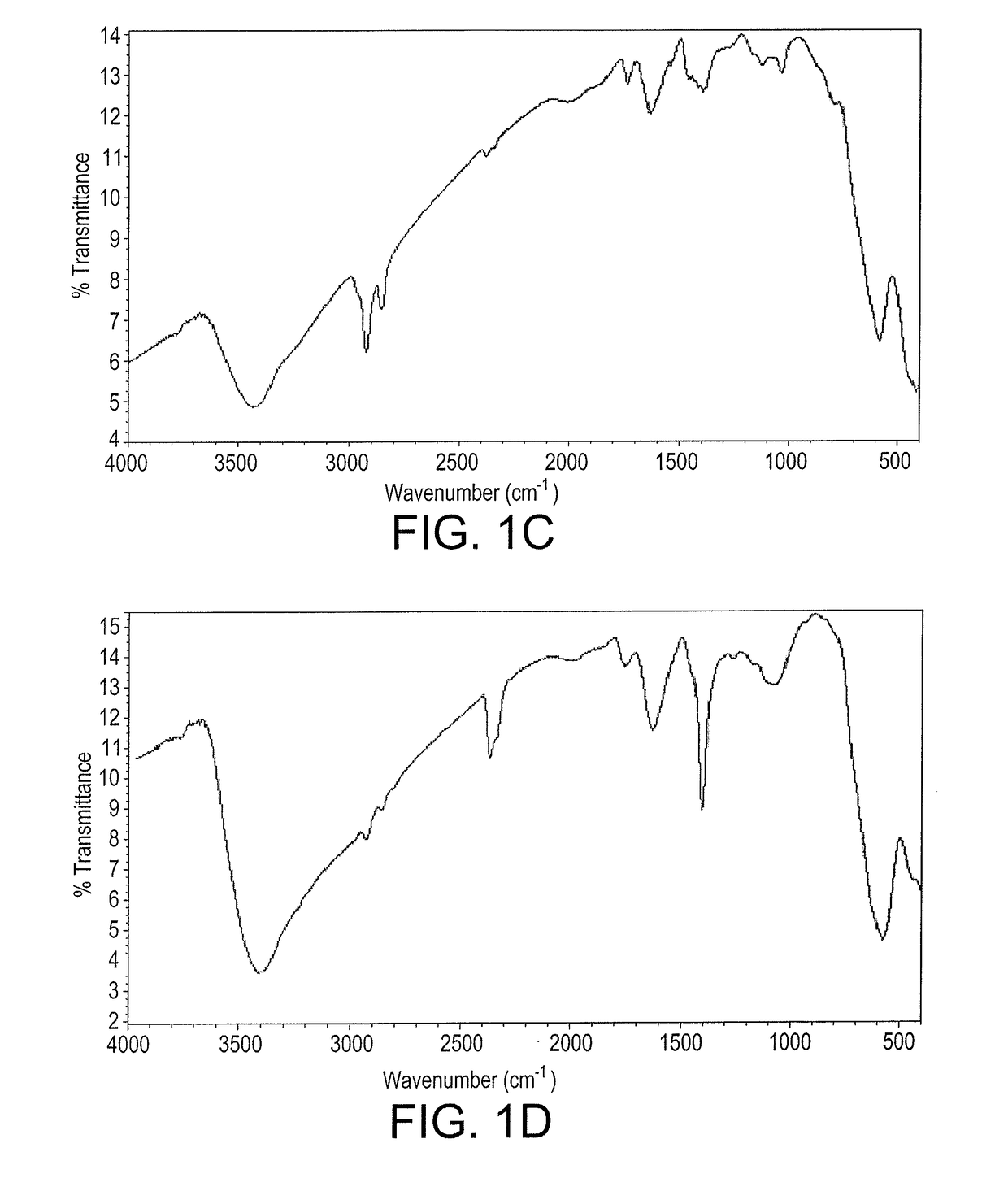Biosynthesized magnetic metal nanoparticles for oil spill remediation
- Summary
- Abstract
- Description
- Claims
- Application Information
AI Technical Summary
Benefits of technology
Problems solved by technology
Method used
Image
Examples
example 1
Preparation of Plant Extract
[0030]The plant Anthemis pseudocotula is a member of the genus Anthemis from the Compositae family that grows widely in different regions of Saudi Arabia. This plant is a semi-prostrate, densely annual herb with bright, dark green, feathery leaves and white flowers. The aerial parts of Anthemis pseudocotula were collected from a wild area of Rowdah Khuraim during March 2016 and identified by a taxonomist in the herbarium division of King Saud University. A plant extract was prepared by collecting the aerial parts and chopping these fresh plant parts into small pieces. The chopped plant part pieces were then air-dried in a shaded location. The dried plant material was extracted three times for 72 hours using saturated alkane (C6-C10), and the resulting organic extract was set aside. The remaining material was then dried again at room temperature and further extracted by (mono, di or tri) chloromethane at 25 degrees Celsius, producing a further organic extr...
example 2
Biosynthesis of Magnetic Nanoparticles (MNPs)
[0031]The metal nanoparticles were prepared by co-precipitation. Ferric chloride hexahydrate and ferrous chloride tetrahydrate are dissolved in 100 mL of deionized water at a molar ratio between 1:1 and 1:5. In this case, between 6 grams and 10 grams of ferric chloride hexahydrate and between 2 grams and 5 grams of ferrous chloride tetrahydrate were dissolved in 100 mL of deionized water. This solution was then stirred with an extract solution (about 1 to 4 grams of either the APA concentrated extract or the APC concentrated extract dissolved in 100 mL of ethanol). Ammonia is then added dropwise with continuous stirring at about 25°-70° C. The pH was adjusted to between 8 and 11, and the solution was stirred for a further 1-6 hours to ensure homogenization and completion of the reaction. The resulting APA-MNPs and APC-MNPs were easily separated using an external magnetic field. The MNPs were washed several times with ethanol, followed by ...
example 3
Characterization of the Capped Magnetic Nanoparticles
[0032]The active functional groups in the APC and APA solutions as well as the APA-MNPs and the APC-MNPs were investigated by FT-IR (Nexus 6700 model FTIR), the spectra of which are shown in FIGS. 1A-1D. In the spectra of APA and APC, FIGS. 1A and 1B respectively, the presence of aliphatic groups (CH3— and —CH2—) was confirmed by the appearance of bands at 2933, 2856, 1453, and 1460 cm−1, which refer to aliphatic C—H stretching and bending vibrations. The appearance of bands at 3413 and 1733 cm−1 refer to the presence of polar functional groups OH and C═O stretching, respectively. The appearance of another band in APC (FIG. 1B) at 2364 cm−1 may be attributed to the presence of amide.
[0033]In the FT-IR spectra of the APA-MNPs and APC-MNPs (FIGS. 1C and 1D), new bands appeared at 572 cm−1 (Fe—O stretching). The appearance of these bands without any other new bands indicated the formation of pure MNPs. The appearance of different ban...
PUM
| Property | Measurement | Unit |
|---|---|---|
| Temperature | aaaaa | aaaaa |
| Temperature | aaaaa | aaaaa |
| Fraction | aaaaa | aaaaa |
Abstract
Description
Claims
Application Information
 Login to View More
Login to View More - R&D
- Intellectual Property
- Life Sciences
- Materials
- Tech Scout
- Unparalleled Data Quality
- Higher Quality Content
- 60% Fewer Hallucinations
Browse by: Latest US Patents, China's latest patents, Technical Efficacy Thesaurus, Application Domain, Technology Topic, Popular Technical Reports.
© 2025 PatSnap. All rights reserved.Legal|Privacy policy|Modern Slavery Act Transparency Statement|Sitemap|About US| Contact US: help@patsnap.com



